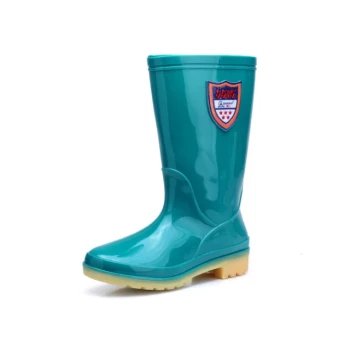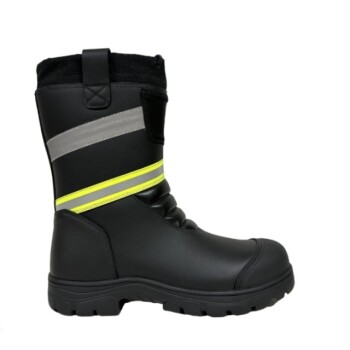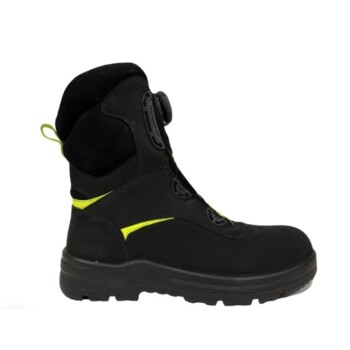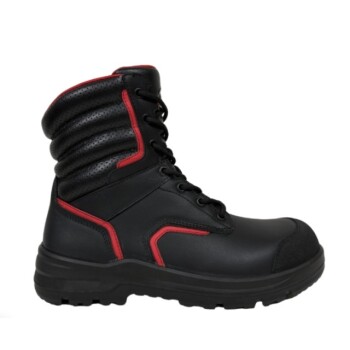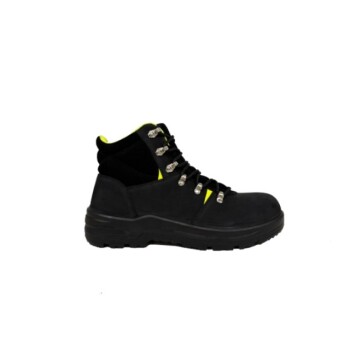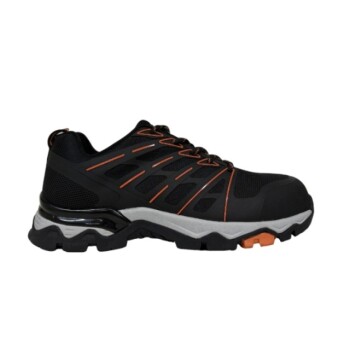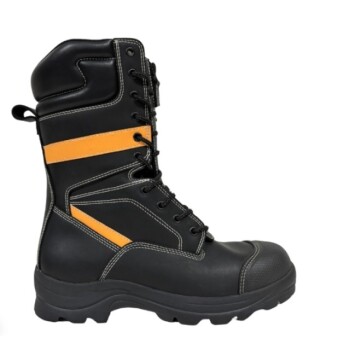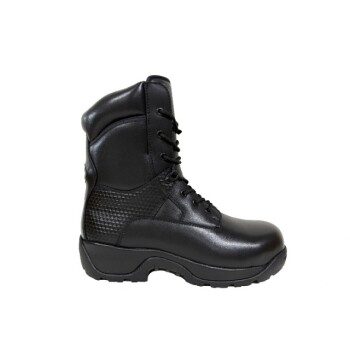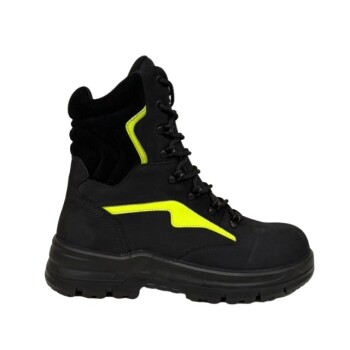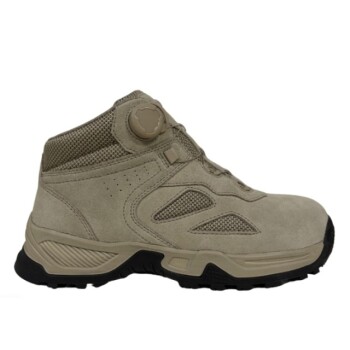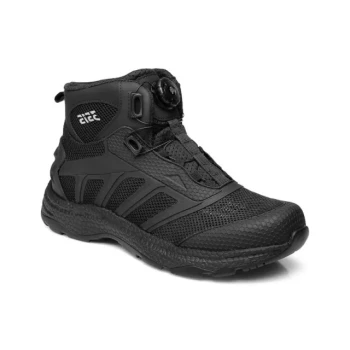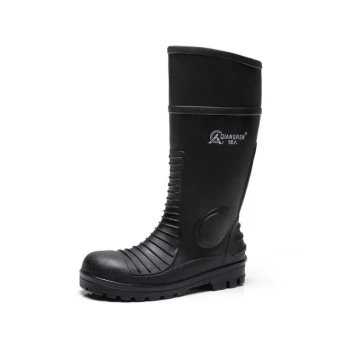For dedicated cold-weather cyclists, winter cycling shoes offer significant advantages in warmth, waterproofing, durability, and overall convenience compared to using overshoes with summer footwear. While overshoes provide a workable solution, dedicated boots are a purpose-built system designed to solve the core problems of winter riding without compromise.
The central decision is not simply about which is "better," but about matching your investment to your commitment. Overshoes are a cost-effective solution for occasional cold rides, while dedicated winter shoes are a long-term investment in comfort and performance for anyone who regularly cycles in harsh conditions.
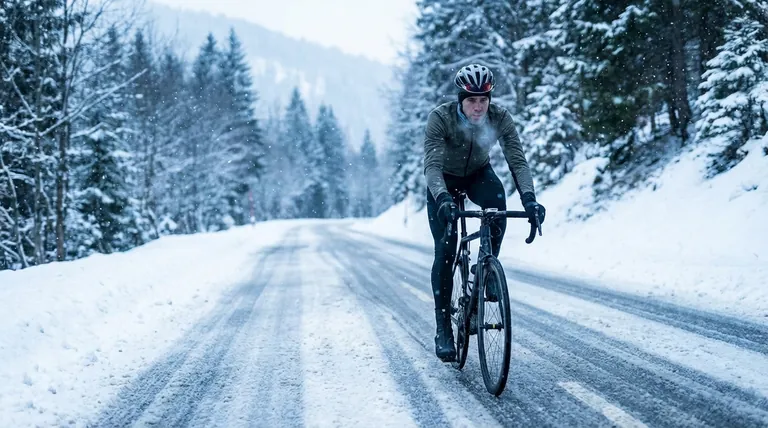
The Core Differences in Protection
The primary job of any winter cycling solution is to protect your feet from the elements. This is where the integrated design of a winter shoe provides a clear advantage.
Superior Insulation and Warmth
A dedicated winter boot features layered insulation built directly into its structure. This integrated system prevents cold spots and is significantly warmer than the single layer of neoprene found in most overshoes.
Some riders in extreme conditions even wear overshoes over their winter boots for maximum thermal protection.
Integrated Waterproofing
Winter shoes are constructed with waterproof or highly water-resistant materials, often including a membrane like Gore-Tex. This creates a reliable barrier against rain and road spray.
Overshoes, by contrast, have openings at the bottom for the cleat, creating a key entry point for water.
Windproof Construction and Ankle Coverage
Winter boots are inherently windproof and feature higher ankle coverage. This design creates a seamless seal with your tights or leg warmers, preventing cold air and moisture from seeping in from the top.
Convenience and Day-to-Day Use
Beyond pure protection, the user experience of winter boots is far less cumbersome than struggling with overshoes on a cold morning.
Simplicity in Gearing Up
Dedicated winter boots are as easy to put on as any other shoe. This is a major benefit when your fingers are cold and dexterity is low.
Overshoes can be notoriously difficult to pull on over your shoes, a frustrating process that only gets worse when they are wet and dirty from a previous ride.
Unobstructed Access to Dials
Once you're riding, overshoes completely block access to adjustment dials like those from Boa or other closure systems. If you need to tighten or loosen your shoe mid-ride, you simply can't.
Winter boots, of course, provide immediate access to their own closure mechanisms at all times.
Better Off-Bike Traction
Winter boots often feature more rugged sole designs with better tread. This provides much safer and more secure traction when you have to walk on potentially slippery or uneven surfaces.
Overshoes are prone to tearing and wearing out quickly when you walk in them, as the thin material underfoot is not designed for abrasion.
Understanding the Trade-offs
Despite their advantages, dedicated winter boots are not the default choice for every cyclist. Overshoes hold a crucial place, particularly when considering cost and fit.
The Upfront Cost Factor
The most significant advantage of overshoes is their low initial cost. A quality pair of neoprene shoe covers is a fraction of the price of dedicated winter boots, making them an accessible entry point for winter riding.
The Benefit of Your Existing Shoes
Overshoes allow you to continue using your perfectly fitted summer shoes. This eliminates the need for seasonal bike fit adjustments that might be required to accommodate the different stack height or shape of a winter boot.
The Simplicity for Occasional Rides
If you only ride in the cold a handful of times per season, the hassle of overshoes may be a perfectly acceptable compromise. Their primary function is to extend the usability of your existing gear for infrequent use.
The Long-Term Value Proposition
When viewed over several seasons, the initial cost difference between the two options becomes less distinct.
Durability and Lifespan
A well-made pair of winter boots can be expected to last for three to four winters of regular use.
In contrast, overshoes rarely last more than a single season due to the wear and tear from walking, zippers failing, and the material stretching or ripping.
Cost-Effectiveness Over Time
Because of their superior durability, winter boots often prove to be the more cost-effective solution in the long run. The initial investment is paid back by not having to replace worn-out overshoes every year.
Making the Right Choice for Your Riding
Your decision should be guided by your budget, local climate, and how seriously you take riding through the winter months.
- If your primary focus is affordability for occasional cold rides: Start with a good pair of neoprene overshoes to extend the range of your current shoes.
- If your primary focus is consistent comfort for regular commuting or training: A dedicated pair of winter cycling shoes is a worthwhile investment that will pay dividends in warmth and convenience.
- If your primary focus is performance in the absolute harshest conditions: Winter boots are the non-negotiable foundation, and you may even add overshoes on top for extreme cold or wetness.
Ultimately, choosing the right system is about removing barriers so you can enjoy your ride, no matter the weather.
Summary Table:
| Feature | Winter Cycling Shoes | Overshoes |
|---|---|---|
| Warmth & Insulation | Integrated, layered system | Single layer of neoprene |
| Waterproofing | Seamless, built-in membrane | Vulnerable at cleat opening |
| Durability & Lifespan | 3-4 seasons | Typically 1 season |
| Convenience | Easy on/off; full access to dials | Difficult to put on; blocks dials |
| Best For | Regular winter riding/commuting | Occasional cold rides |
Ready to gear up for winter with confidence?
As a large-scale manufacturer, 3515 produces a comprehensive range of high-performance footwear for distributors, brand owners, and bulk clients. Our production capabilities encompass all types of shoes and boots, including durable, weather-ready cycling footwear designed for comfort and long-term value.
Let us help you equip your customers for the season. Contact our team today to discuss your manufacturing needs and discover how we can bring your winter cycling product vision to life.
Visual Guide
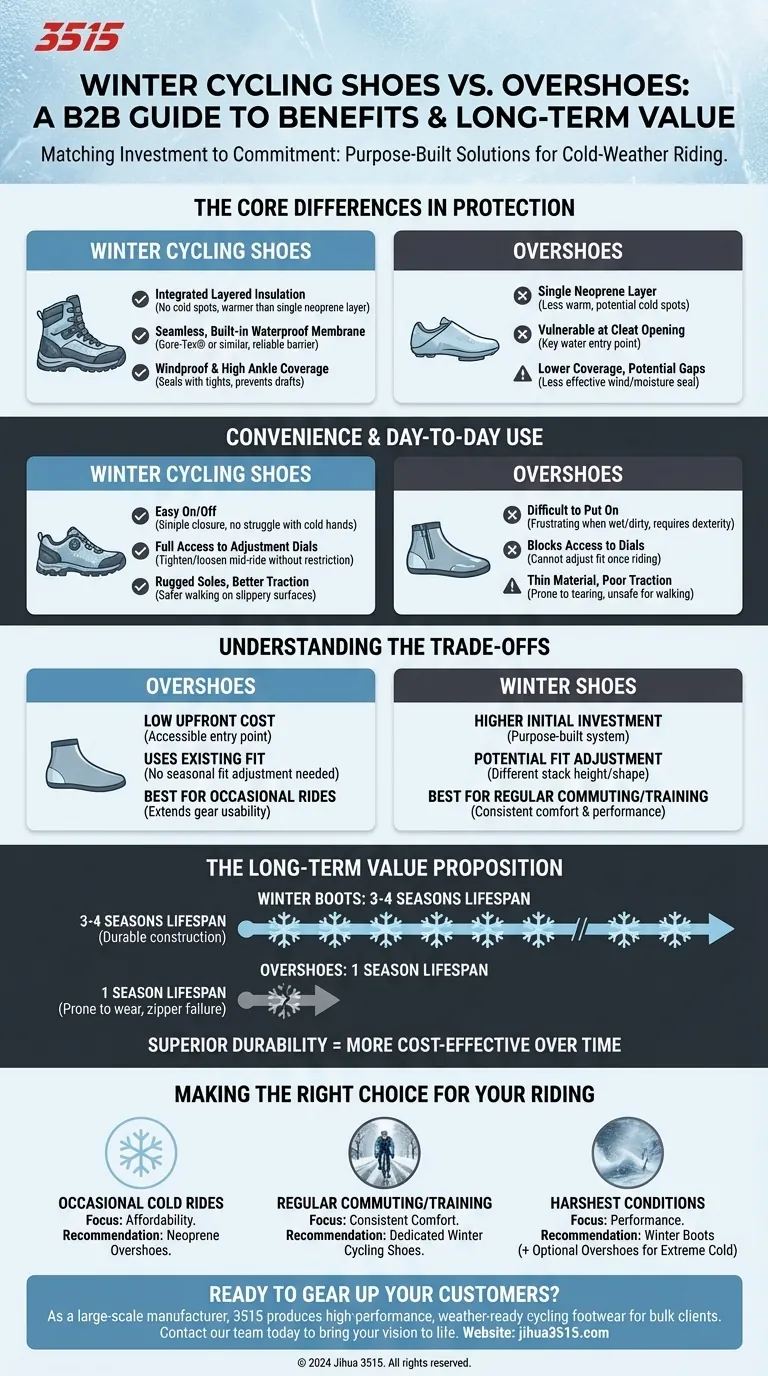
Related Products
- Factory Direct Wholesale Rain Boots Durable Waterproof & Fully Customizable
- High Performance Fire-Retardant Waterproof Safety Boots
- Premium High-Cut Waterproof Safety Boots Manufacturing & Wholesale Solutions
- Premium Wholesale Waterproof Safety Boots High Performance Protection for Industrial Markets
- Factory-Direct Wholesale Canvas Boots with High-Traction Rubber Soles
People Also Ask
- What factors should be considered when choosing rain boots? Find the Perfect Boot for Your Needs
- What are the main materials used in the production of rain boots? A Guide to Durability & Comfort
- What are the characteristics of rubber as a rain boot material? Discover Its Durability & Flexibility
- What are the liner materials for rain boots? Cotton vs. Blends for Comfort & Durability
- What are the key characteristics of rain boots? Essential Features for Total Dryness
